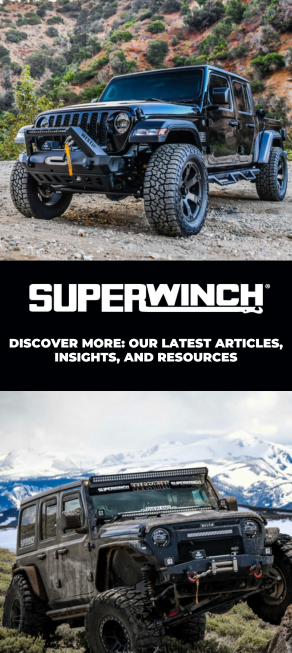The best off-roading adventures are often ones that deliver a challenging yet manageable experience. Finding that balance can be tricky, as equipment issues and weather conditions can quickly turn an easy trail into a tough one.
So, whether you are an experienced off-roader or planning your first trip, getting stuck is just part of the journey. Half the fun is getting your truck out of a tricky situation, as long as you know how to tackle the challenge. In this blog, we discuss the tools, techniques, and troubleshooting tips you need to tackle just about anything an off-roading adventure can throw at you.
Essential Off-Roading Recovery Kit
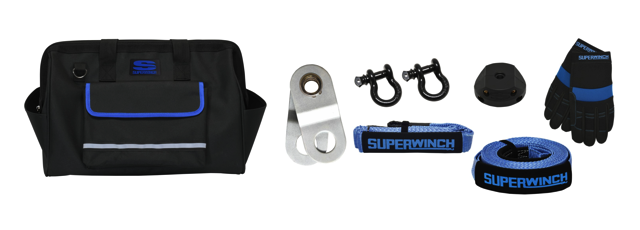
Being prepared is essential when it comes to off-roading. You should always plan for the worst-case scenario, that way getting stuck is just part of the trip and not a frustrating end to your day out. There are tons of off-roading gear to pick from, but the ones below will help you tackle most trails with confidence.
- Recovery Traction Boards and Shovels
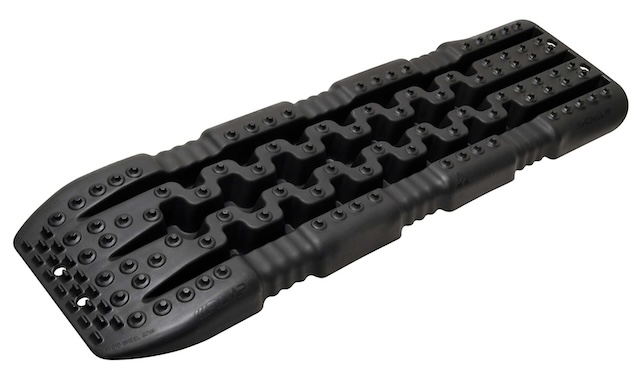
Recovery boards are simple yet effective tools that work great wherever you need to maximize traction. They are especially useful in soft terrain like snow or sand. You’ll also need a shovel to position the boards for your tires properly.
- Winches
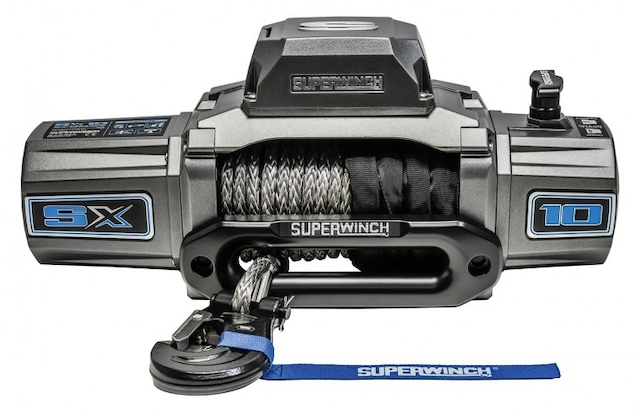
You should never leave home without a high-quality winch attached to your vehicle. It will allow you to recover your vehicle in a safe and controlled manner, and you can also venture out further without needing a support vehicle. Winches should be able to pull 1.5 times your Gross Vehicle Weight (GVW), but you will need to decide whether synthetic rope or steel cable suits you best and various other factors. Read our in-depth blog on winch rope here to find out more.
- Gloves and Winch Dampers
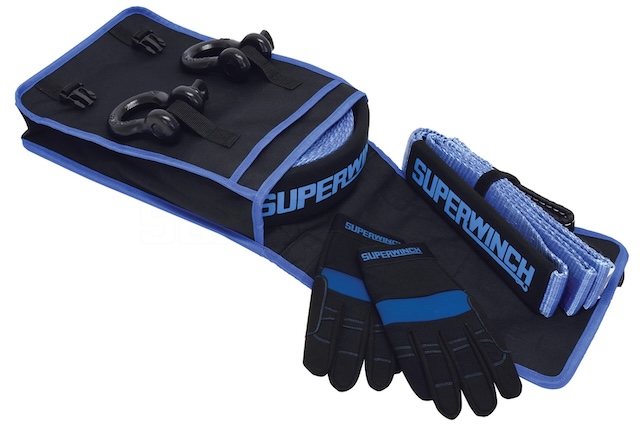
Gloves are an essential safety item, especially useful when handling steel winch cables. Winch dampers are also great at dampening the recoil in steel winch cabling, which can otherwise whip around dangerously if it snaps.
- High-Lift Jacks and Air Compressors
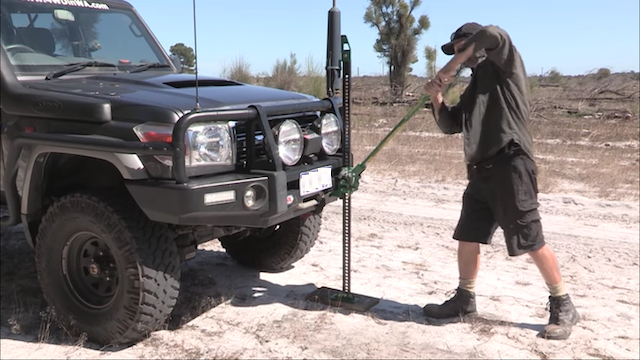
Air compressors are very useful if you are tackling varying terrain. They will allow you to air down your tires for soft sand or rocky terrain, and then easily re-inflate them when you get back to the main road. High-lift jacks are great at freeing bogged-down wheels, helping remove obstacles from underneath the truck, or simply changing a tire on uneven terrain.
- Tow Straps And D-Shackles
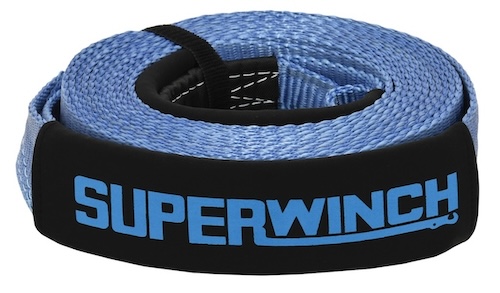
A simple tow strap and a set of D-shackles or soft shackles should be part of every off-road recovery kit. You may not need them on every trail, but they can make the difference between a great day out or hours spent waiting to be rescued.
Useful Off-Roading Tips And Techniques
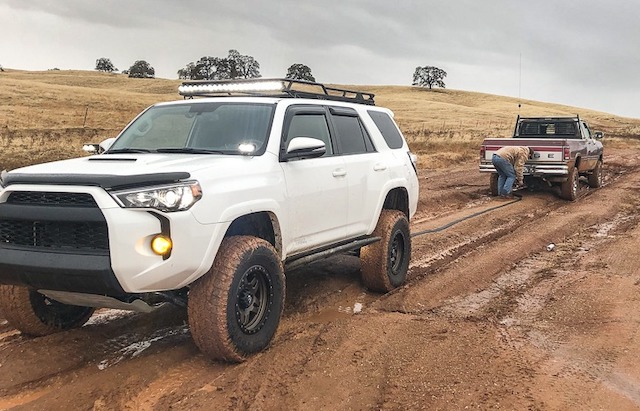
Having the best equipment is great, but knowing how to use it is the only way you’ll get the most out of it. First off, assess each section of the trail before attempting it. This will give you a better idea of what to expect. Every trail will teach you something new, and below are some handy tips and techniques to keep in mind when you get stuck next.
- Traction
Often, the issue is a lack of traction. Recovery tracks or traction mats can be placed under the tires to provide grip. Lowering air pressure in the tires can increase the tread surface area, a handy way to improve traction in soft sand or snow.
- Winching
If you’re seriously stuck, a winch can be your best friend. Ensure you have a solid anchor point, like a tree or another vehicle. Use a tree protector strap to avoid damaging the environment. There are several winching methods and techniques; read our blog on 5 Things That Impact Winch Pulling Power to learn more.
- Snatch Recovery
If you are unable to winch your way out, or if you only have a snatch strap available, you can attempt a snatch recovery. The strap should be securely fastened to both vehicles, and the strap should be loose enough so that the recovery vehicle can pull it taut to create enough energy to yank the stricken vehicle free. Be sure to stand clear of the strap and ensure that it is rated for the weight of the vehicle being freed. It is very important that the recovery points on both vehicles are rated for the load that will be generated by using the snatch strap. Also, never use a hitch ball as a recovery point. They will break under loads generated by recovering a vehicle. A broken hitch ball flying through the air is an extreme safety hazard.
- Shoveling and Digging
Sometimes, there may not be another vehicle to aid in the recovery or a convenient place to attach a winch rope. In these instances, you can try digging out the sand, snow, or mud from around the tires to provide enough room to maneuver. Combining this with traction boards can help free the vehicle.
Winch Troubleshooting Tips
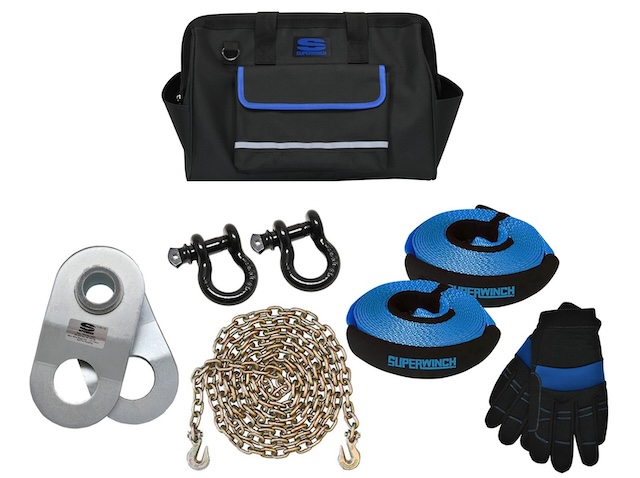
Regularly inspect your truck and all your recovery gear. In the event of equipment malfunction, you can follow some troubleshooting steps to diagnose and solve the problem.
Common Winch Issues
Winch Does Not Operate – Check for loose wiring connections or a drained battery. Inspect the solenoid for damage or malfunction.
Winch Operates Slowly – Ensure the battery is fully charged. Verify that the winch motor isn’t overheating or is working above its rated pull capacity. Running the vehicle during winching and giving it a break between pulls can help.
Winch Motor Makes Noise, But The Drum Doesn’t Turn – Possible issue with the clutch. Ensure it is fully engaged. Inspect for mechanical obstructions or damages to the gear system. A stuck cable may also prevent the winch from operating. You will need to slowly unspool the cable manually in this case.
Winch Cable Does Not Spool Evenly – Guide the cable manually, maintaining tension to ensure even spooling. Always use gloves and check for damage to the winch drum or cable as you are re-spooling.
Remote Control Issues – Check the remote-control wiring and inspect the unit for damage. For wireless remotes, check the batteries and signal strength of the remote.
Motor Runs But Drum Does Not Turn – Freespool may not be engaged.
Winch Runs Backwards – The motor wires may be reversed, or the solenoid is wired incorrectly. Recheck the wiring.
Superwinch Has The Recovery Gear You Need
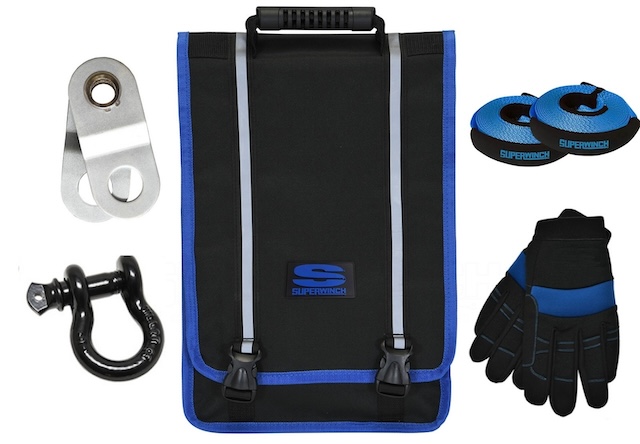
Superwinch has been providing reliable and high-performance winching products for over 50 years. It is a subsidiary of Westin® Automotive, a manufacturer of quality aftermarket automotive products for Trucks, Jeeps, and SUVs.
Investing in quality recovery gear and knowing how to use it safely and effectively is vital. Understanding common issues with off-roading equipment and how to resolve them is just as important. With the right knowledge and tools, you will be able to tackle just about any off-road challenge that comes your way.
We back our products up with a comprehensive warranty, too. Get in touch with our expert team if you need assistance with our wide range of winches and winching accessories.

